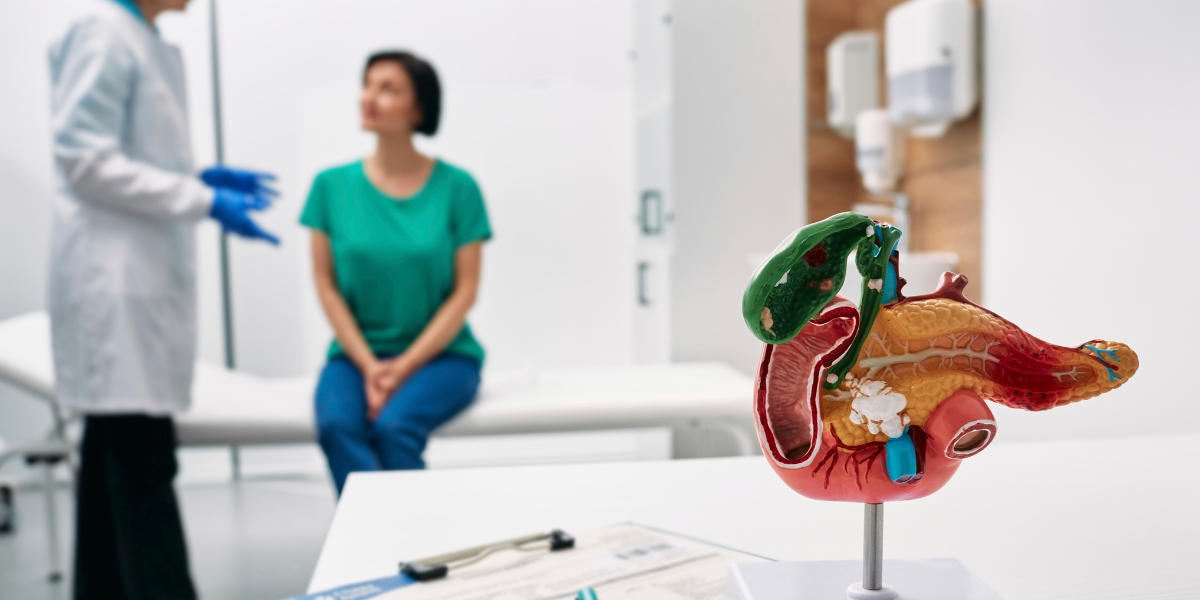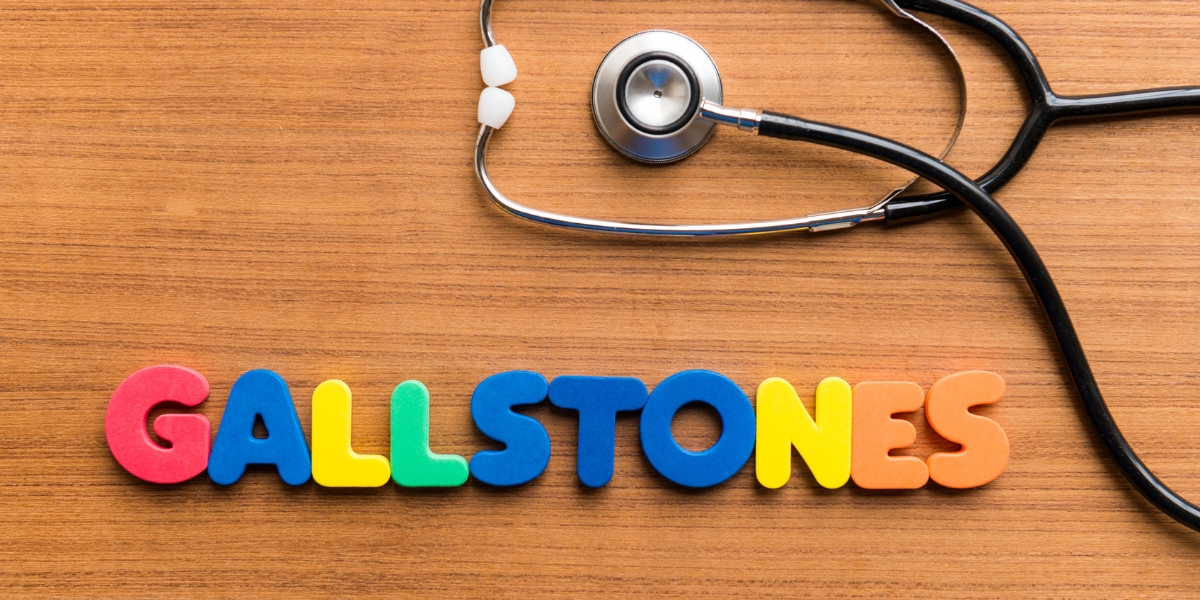

Have you ever heard of gallstones? Whether you're curious about gallstones or looking for ways to prevent them, this blog is here to provide an overview of gallstones and share some valuable prevention strategies.
We'll delve into the details of gallstones, exploring their causes, risk factors, and common symptoms. Nevertheless, prevention is always better than cure. That's why we'll also discuss effective strategies to reduce the risk of gallstone formation and keep your gallbladder healthy.
By understanding the basics of gallstones and implementing preventive measures, you can take control of your digestive health and minimize the chances of experiencing discomfort or complications associated with gallstones.
So, whether you're simply curious about gallstones or actively seeking ways to prevent them, let's embark on this journey together. By the end of this blog, you'll have a better understanding of gallstones and valuable insights to help you maintain a healthy gallbladder. Let's get started on our quest for digestive well-being!
What Are Gallstones?
Your gallbladder is a component of your biliary system that transports bile between organs. The bile duct connects these organs. Bile flows through the bile ducts from the liver to the gallbladder and from the gallbladder to the small intestine. The pancreas also uses the bile ducts to transport digestive juices.
Having gallstones at the mouth of your gallbladder might impede bile passage in and out of your gallbladder. Additionally, gallstones that pass through your gallbladder and into your bile ducts may impede the flow of bile. As a result, bile fluid may back up into the adjacent organs. And when this happens, it creates pressure, pain, and inflammation in your organs and bile ducts.

How Do They Affect You?
There are a number of issues that can arise if the above event occurs.
Gallbladder Disease:
Gallstones are a type of gallbladder disease that is the most common. When they get stuck, bile backs up into your gallbladder, causing irritation. Over time, this can lead to long-term harm to your gallbladder, scarring the tissues and preventing it from working. Bile flow obstruction also increases the likelihood of gallbladder infection.
Liver Disease:
You may experience inflammation in your liver if your biliary system is blocked. This increases your risk of infection and long-term scarring (cirrhosis). When your liver fails to function properly, your entire biliary system fails. It is possible to survive without a gallbladder, but not without a liver.
Gallstone pancreatitis:
This happens when a gallstone that plugs the pancreatic duct causes inflammation of the pancreas. Temporary inflammation creates pain, and chronic inflammation causes long-term damage that can prevent your organ from functioning.
Cholangitis:
Inflammation of your bile ducts might result in infections and scarring in the long run. Damage to your bile ducts leads them to constrict, limiting bile flow. Even after the blockage has been removed, this can result in long-term bile flow difficulties.
Jaundice:
Your liver removes toxins from your body through bile. And when you are down with jaundice, the backed-up bile enters your system and makes you sick. You will notice that the whites of your eyes are yellow with bilirubin content when you are down with jaundice.
Malabsorption:
If bile does not reach your small intestine as it should, you may have problems breaking down and absorbing nutrients from food. Bile is particularly crucial for fat digestion and the absorption of fat-soluble vitamins in the small intestine.
Causes of Gallstones
Gallstone formation is influenced by many factors, including genetics, age, gender, weight gain or loss; diet (especially high-fat foods), smoking cigarettes; chronic medical conditions such as diabetes mellitus; rapid weight loss. There are two types of gallstones: cholesterol stones and pigment stones. Cholesterol stones form when there is too much cholesterol in the bile or when the bile becomes supersaturated with cholesterol. Pigment stones form when bilirubin, a pigment in red blood cells produced by the liver, combines with calcium to form a stone.
Signs and Symptoms of Gallstones
The gallbladder develops solid masses called gallstones. They can be made of cholesterol, calcium, or other substances. These stones may cause pain in the upper right side of your abdomen (belly). The pain may worsen after meals and come and go throughout the day. It's also common to have nausea or vomiting along with this kind of abdominal pain.
You might notice yellowing of your skin or eyes (jaundice), especially if you have severe inflammation inside your bile ducts - a condition known as cholangitis - which can happen when gallstones block them completely.
You may also have a fever, chills, and other signs of infection in the area around your gallbladder. Gallstones are especially common in women who've had children. They can develop during pregnancy or shortly after giving birth.
Additional Diagnosis
The following tests and methods are used to identify gallstones and gallstone complications:
Ultrasound of the abdomen. This is the most commonly used test for detecting gallstones. Abdominal ultrasonography is performed by moving a device (a transducer) across your stomach. The transducer provides signals to a computer, which generates images of your abdomen's structures.
EUS stands for endoscopic ultrasound. This method can help locate tiny stones that abdominal ultrasonography may miss. Endoscopic ultrasound (EUS) involves your doctor passing a tiny, flexible tube (endoscope) through your mouth and digestive tract. In the tube, a small ultrasound device (transducer) generates sound waves that form a precise image of the surrounding tissue.
Other imaging studies: Oral cholecystography, hepatobiliary iminodiacetic acid (HIDA) scan, CT scans, endoscopic retrograde cholangiopancreatography (ERCP) or magnetic resonance cholangiopancreatography (MRCP) may be performed as further testing. Endoscopic retrograde cholangiopancreatography (ERCP) can be used to remove gallstones identified during the operation.
Blood tests are performed. Blood tests may identify infection, jaundice, pancreatitis, or other gallstone-related problems.
Endoscopic retrograde cholangiopancreatography (ERCP) highlights the bile ducts and pancreatic duct on X-ray images with a dye. A thin, flexible tube with a camera on the end (endoscope) is passed down your neck and into your small intestine. The dye enters the ducts via a short hollow tube (catheter) inserted into the bile duct.
Treatment for Gallstones
Most patients with gallstones who do not experience symptoms will never require treatment. Based on your symptoms and the results of diagnostic tests, your doctor will assess if gallstone therapy is necessary. Based on your symptoms and the results of diagnostic tests, your doctor will assess if gallstone therapy is necessary.
The gallbladder is removed through surgery (cholecystectomy). Because gallstones frequently return, your doctor may prescribe surgery to remove your gallbladder. Instead of being held in your gallbladder, bile flows directly from your liver into your small intestine after your gallbladder is removed.
Cholecystectomy through laparoscopy
During laparoscopic cholecystectomy, special surgical equipment and a tiny video camera are placed through incisions in your abdomen. To provide room for the surgeon to work with surgical equipment, your abdomen is inflated with carbon dioxide gas.
You don't need your gallbladder to live, and gallbladder removal has no effect on your capacity to digest meals, but it can induce transient diarrhea.
Gallstone medications: Some oral medications can dissolve gallstones. However, it may take months or years of medication to eliminate your gallstones in this manner, and if treatment is discontinued, gallstones will most likely form again.
Due to the fact that medication does not always work, gallstone medications are rarely prescribed to those who cannot undergo surgery for gallstones.

Prevention for Gallstones
Here are five key points to help prevent gallstones:
1. Maintain a Healthy Weight:
Excess body weight, particularly obesity, is a significant risk factor for developing gallstones. A balanced diet and regular exercise are essential to maintaining a healthy weight. Gradual and sustainable weight loss, if necessary, can reduce the risk of gallstone formation.
2. Eat a Balanced Diet:
Follow a diet rich in fruits, vegetables, whole grains, and lean proteins while limiting the intake of saturated fats, cholesterol, and refined sugars. Include high-fiber foods in your meals, as they can help regulate digestion and prevent gallstone formation.
3. Stay Hydrated:
Drinking adequate water daily is essential for maintaining overall health and preventing gallstones. Water helps in the proper digestion and elimination of waste, reducing the gallbladder's concentration of bile and cholesterol.
4. Moderate Alcohol Consumption:
Excessive alcohol consumption can increase the risk of gallstone formation. It is recommended to moderate alcohol intake by following the guidelines set by health authorities, such as limiting it to one drink per day for women and up to two drinks per day for men.
5. Be Mindful of Medications and Rapid Weight Loss:
Some medications, such as certain cholesterol-lowering drugs, may increase the risk of gallstone formation. Discuss potential side effects with your healthcare provider if you are prescribed medication. Additionally, avoid crash diets or rapid weight loss methods, as they can disrupt the balance of cholesterol and bile in the gallbladder, promoting the formation of gallstones.
Conclusion
Gallstones are a common condition that affects millions of people. However, they can be treated effectively with the right treatment plan. Suppose you are experiencing symptoms of gallstones or have been diagnosed with this condition. In that case, speaking with your doctor about the options available to help manage your symptoms and prevent future attacks is important.
Remember, while these preventive measures can significantly reduce the risk of gallstones, consulting with a healthcare professional for personalized advice is always advisable. If you experience symptoms such as abdominal pain, jaundice, or persistent digestive issues, seek medical attention promptly, as these could be signs of gallstone-related complications.
Disclaimer: The information provided in this blog is for educational and informational purposes only. It is not a substitute for professional medical advice, diagnosis, or treatment. Always seek the advice of your physician or qualified healthcare provider with any questions you may have regarding a medical condition.
Also read: unveiling the Significance of Preventive health Check-Ups